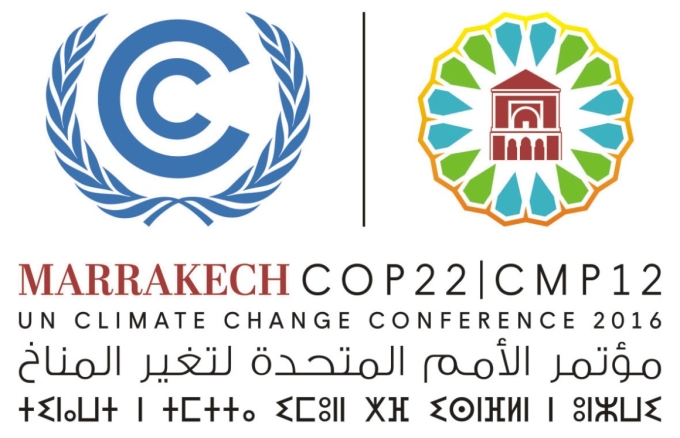|
The COP of Action: From Commitment to Implementation The
COP 22 and India’s Agenda
With loss and damage and adaptation combined together as an issue, other areas of focus had to be the reviewing of the Warsaw International Mechanism (WIM). It is important that the tool addresses adaptation, financial risk management and finance needs for irreversible damage caused by climate change. A cause for great concern for India is that under the Warsaw International Mechanism (WIM), the quota for adaptation from the USD 100 billon has only one fifth marked for climate adaptation measures such as protecting agriculture, prevention and response to natural disasters and water security. India is among the most vulnerable countries to climate induced slow-onset disasters. However, most of the fund is earmarked for mitigation options such as reducing emissions and promoting renewable energy. Even though this COP did make the call for finance for loss and damage loud and clear, there wasn’t a clear breakthrough. India while ratifying the Paris Agreement expressed its disappointment over the flow of climate funds. In a statement, the government noted that the Green Climate Fund (GCF) commitment “does not match the enormous finance and technology requirements indicated by developed countries in their NDCs.” These are important issues as they set the stage for India’s implementation. India’s
priorities for COP22 were aptly spelt out as follows: India’s
Commitment to Implementation With new national goals on climate change having been set through the Nationally Determined Contributions (NDCs), the SAPCCs would need to be altered to address the new commitments. The next logical step then would be to find sectoral or state level goals that would have quantified information in order to add up to the targets. An additional co-benefit would be to integrate the sustainable development goals and priorities from the SDGs. India is also party to the Sustainable Development Goals that were ratified in 2015. The SDG targets would help address India’s critical needs such as ending poverty in all forms, hunger and food insecurity. Implementation would further involve creation of targets especially in terms of fully-specified policies, measures, mandates, as well as enabling frameworks to improve NDC implementation. The way to improve mitigation and adaptation is to optimise resources by making effective use of domestic and international resources. This can begin by first aligning and measuring the resonance or dissonance between the current government schemes. There could be government schemes that could either disable or reinforce particular climate adaptation action. Another very important question India faces as it moves into the implementation phase is how budgets to reach the commitments will be met. Would it be through government spending, international public and private financing, or through policies requiring households and businesses to bear costs? It is important to answer this question to streamline finances and remove inefficiency. India’s plan to reach the Nationally Determined Contributions (NDCs) needs to be strongly gender-equitable and community based. The need for gender mainstreaming in climate action plans is vital for inclusive sustainable development and climate mitigation. Community based adaptation approach must also be the first line of action in terms of integration of adaptation in policies and planning. Conclusion The Paris Agreement has come early into force, but temperatures are increasing globally each month. The impacts of climate change are already here. It is important that the progress on the climate justice front and the momentum built up in COP 21 is kept up. The main challenge for India in COP 22 was to keep that going and focus on pushing the voice of the developing world. Now, the country has to get ready to convert its Nationally Determined Contributions (NDCs) to the state level context and ensure effective implementation so that principles of food security, gender equality and human rights are respected and adhered. ■ Syed Abdul Aziz
Ishaqi Farhan
References: |
 The
discussions that have taken place at COP22 in Marrakesh, Morocco this
month are important as they will design the international stage for
final additions and implementation details before it comes into action
in 2020. The mechanisms of transparency are most important for
addressing climate justice. The discussions were to deal around 3 major
contentious issues: Paris Agreement rulebook, climate finance and
equitable mechanisms with regards to transparency, monitoring etc. The
Paris Agreement rulebook will help in reporting and accounting for
climate action. It will be spelling out modalities, procedures and
guidelines for measuring emissions, adaptation, transparency framework
and support. With regards to climate finance, raising of USD 100 billion
annually was to be deliberated. There were to be discussions on the
contributions by each country and sources of this money. Allocation of
the Green Climate Fund to countries also had to be spelled out.
The
discussions that have taken place at COP22 in Marrakesh, Morocco this
month are important as they will design the international stage for
final additions and implementation details before it comes into action
in 2020. The mechanisms of transparency are most important for
addressing climate justice. The discussions were to deal around 3 major
contentious issues: Paris Agreement rulebook, climate finance and
equitable mechanisms with regards to transparency, monitoring etc. The
Paris Agreement rulebook will help in reporting and accounting for
climate action. It will be spelling out modalities, procedures and
guidelines for measuring emissions, adaptation, transparency framework
and support. With regards to climate finance, raising of USD 100 billion
annually was to be deliberated. There were to be discussions on the
contributions by each country and sources of this money. Allocation of
the Green Climate Fund to countries also had to be spelled out.